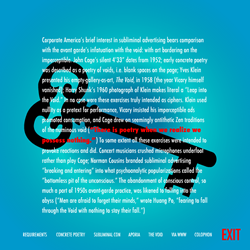This May 21, 2020 at 7pm Eastern Time is another great WordHack!
A regular event at Babycastles here in New York City, this WordHack will be fully assumed into cyberspace, hosted as usual by Todd Anderson but this time with two featured readings (and open mic/open mouse) viewable on Twitch. Yes, this is the link to the Thursday May 21, 2020 WordHack!
There are pages for this event up on Facebook and withfriends.
I’m especially enthusiastic about this one because the two featured readers will be sharing their new, compelling, and extraordinary books of computer-generated poetry. This page is a virtual “book table” linking to where you can buy these books (published by two nonprofit presses) from their nonprofit distributor.
 Lillian-Yvonne Bertram will present Travesty Generator, just published by Noemi Press. The publisher’s page for Travesty Generator has more information about how, as Cathy Park Hong describes, “Bertram uses open-source coding to generate haunting inquiring elegies to Trayvon Martin, and Eric Garner, and Emmett Till” and how the book represents “taking the baton from Harryette Mullen and the Oulipians and dashing with it to late 21st century black futurity.”
Lillian-Yvonne Bertram will present Travesty Generator, just published by Noemi Press. The publisher’s page for Travesty Generator has more information about how, as Cathy Park Hong describes, “Bertram uses open-source coding to generate haunting inquiring elegies to Trayvon Martin, and Eric Garner, and Emmett Till” and how the book represents “taking the baton from Harryette Mullen and the Oulipians and dashing with it to late 21st century black futurity.”
 Jörg Piringer will present Data Poetry, just published in his own English translation/recreation by Counterpath. The publisher’s page for Data Poetry offers more on how, as Allison Parrish describes it, Jörg’s book is a “wunderkammer of computational poetics” that “not only showcases his thrilling technical virtuosity, but also demonstrates a canny sensitivity to the material of language: how it looks, sounds, behaves and makes us feel.”
Jörg Piringer will present Data Poetry, just published in his own English translation/recreation by Counterpath. The publisher’s page for Data Poetry offers more on how, as Allison Parrish describes it, Jörg’s book is a “wunderkammer of computational poetics” that “not only showcases his thrilling technical virtuosity, but also demonstrates a canny sensitivity to the material of language: how it looks, sounds, behaves and makes us feel.”
Don’t Venmo me! Buy Travesty Generator from Small Press Distribution ($18) and buy Data Poetry from Small Press Distribution ($25).
SPD is well equipped to send books to individuals, in addition to supplying them to bookstores. Purchasing a book helps SPD, the only nonprofit book distributor in the US. It also gives a larger share to the nonprofit publishers (Noemi Press and Counterpath) than if you were to get these books from, for instance, a megacorporation.
Because IRL independent bookstores are closed during the pandemic, SPD, although still operating, is suffering. You can also support SPD directly by donating.
I also suggest buying other books directly from SPD. Here are several that are likely to interest WordHack participants, blatantly including several of my own. The * indicates an author who has been a featured presenter at WordHack/Babycastles; the books next to those asterisks happen to all be computer-generated, too:
- Articulations, Allison Parrish *
- Mexica: 20 Years-20 Stories [20 años-20 historias], Rafael Pérez y Pérez *
- The Truelist, Nick Montfort *
- Encomials: Sonnets from Pentametron, Ranjit Bhatnagar *
- Machine, Unlearning, Li Zilles *
- A Noise Such as a Man Might Make, Milton Läufer *
- Ringing the Changes, Stephanie Strickland *
- #!, Nick Montfort *
- How to do Privacy in the 21st Century, Peter Burnett
- 2×6, Nick Montfort *, Serge Bouchardon, Andrew Campana, Natalia Fedorova, Carlos León, Aleksandra Mal/ecka, Piotr Marecki
- Hackers, Aase Berg
Thanks for those who want to dig into these books as avid readers, and thanks to everyone able to support nonprofit arts organizations such as Babycastles, Small Press Distribution, Noemi Press, and Counterpath.




